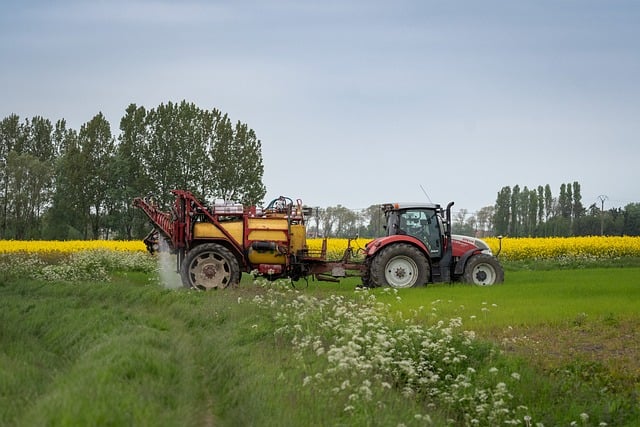The Western Balkans—Albania, Bosnia and Herzegovina, Kosovo, North Macedonia, Montenegro, and Serbia—are at a crossroads. The region’s agricultural sector, once the backbone of its economy, now faces a paradox: while it remains a critical employer, it struggles to retain its youth. Rural depopulation, brain drain, and outdated farming practices threaten to hollow out the countryside. Yet, buried in this crisis is an opportunity—one that hinges on reimagining agriculture not as a relic of the past, but as a frontier of innovation, employment, and sustainable development.
Why Are Young People Leaving Rural Areas?
The numbers are stark. Albania has the second-youngest population in Europe, yet rural youth unemployment hovers at 27.9%, far above the EU average (WG4-REAWG). In Kosovo, 56% of rural youth believe connections to power brokers—not skills—determine employment (Krasniqi, 2022). Meanwhile, 79% of Albanian youth express a desire to emigrate (Gallup, cited in WG4-REAWG). The reasons are systemic:
- Education Mismatch: Vocational training programs are disconnected from agri-tech needs. In Albania, a 4.69% decline in youth enrollment in higher education from 2018–2020 reflects disillusionment with outdated curricula (WG4-REAWG).
- Land Fragmentation: The average farm size in Albania is 1.16 hectares—too small for mechanization or profitability (World Bank, 2017). Compare this to the U.S., where the average farm spans 180 hectares, enabling economies of scale.
- Urban Glamour vs. Rural Neglect: Rural youth work longer hours for lower wages than urban peers, with fewer social outlets (WG4-REAWG). In Serbia, rural wages in agriculture are 30% below the national average (World Bank, 2017).
Can Agri-Tech Reverse the Tide?
The answer isn’t just “yes”—it’s urgent. Digital agriculture could bridge the gap between tradition and modernity. Consider:
- Precision Farming: In India, startups like Ninjacart use AI to connect small farmers directly to supermarkets, cutting out exploitative middlemen. Why not replicate this in the Western Balkans, where 35–40% of farmers are semi-subsistent (World Bank, 2017)?
- Blockchain for Traceability: Serbia’s Futog cabbage earned a geographic indication (GI) label through collective action (Box 6, World Bank). Blockchain could authenticate such products for EU markets, where consumers pay premiums for origin stories.
- E-Commerce Platforms: Spain’s Delinostrum.com sells gourmet foods online across Europe (Box 4, World Bank). A Balkan equivalent could empower rural youth to bypass local monopolies.
Yet, tech alone isn’t enough.
Policy Levers: What Works (and What Doesn’t)
- Land Consolidation with a Twist
Montenegro’s farms average 4.5 hectares—larger than Albania’s but still inefficient. Contrast this with South Asia’s group farming models, where smallholders pool land for collective bargaining. Kerala’s Kudumbashree program boosted women’s farm incomes by 200% through cooperatives (World Bank, 2020). The Balkans need similar youth farming collectives, subsidized by EU IPARD funds. - Agri-Tech Incubators
Serbia’s Innovation Fund (Box 8, World Bank) offers grants for agri-startups. But why limit it to Belgrade? Rural tech hubs—like Rocket Seeder in Australia—could mentor youth in drone farming or hydroponics. - Mandatory Agri-Entrepreneurship in Schools
North Macedonia’s vocational schools teach tractor maintenance—useful, but obsolete. Israel’s Negev Desert schools integrate coding with drip irrigation. The Balkans should redesign curricula with input from startups like AgriGator (a Croatian AI soil analyzer). - Conditional Cash Transfers for Young Farmers
Albania’s National Youth Strategy (2022–2029) is heavy on rhetoric and light on cash. Brazil’s Pronaf Jovem offers low-interest loans to young farmers who adopt sustainable practices. The Balkans could tie EU grants to youth employment quotas.
The American South Parallel: A Cautionary Tale
The U.S. South’s post-Civil War “tenant farming” system entrenched rural poverty for generations. The Balkans risk a similar fate if youth are excluded from land ownership. The U.S. later corrected this through the Homestead Act and Cooperative Extension System. The Balkans lack such historic redress—but they have EU accession as leverage.
A Provocation: Is “Agriculture” Even the Right Word?
The term itself feels archaic. The future lies in agri-systems: hybrid sectors where farming merges with tourism, tech, and renewables. Italy’s Lazio region (Box 12, World Bank) brands its agri-food as cultural heritage. The Balkans could do the same—imagine “Dinaric Alps Truffle Tours” marketed by Kosovar youth on TikTok.
Conclusion: A Generational Bargain
The Balkans won’t fix agriculture by clinging to nostalgia. The deal is simple: give youth land, tech, and a seat at the policy table, or watch them leave forever. The tools exist. The question is whether governments will wield them—or let another generation slip away.
Citations
- Bajramović et al. 2016. Analysis of Agricultural and Rural Development Policies in the Western Balkans. European Commission.
- Krasniqi, Vlere. 2022. Policy Review and Desk Study on Rural Youth in Kosovo. Agricultural Policy Forum.
- World Bank. 2017. Agriculture for Jobs and Growth in the Western Balkans. Regional Report.
- WG4-REAWG. 2022. The Role of Youth in Rural Development in the Western Balkans. Tirana Declaration.
Author: Kazi Altaf






